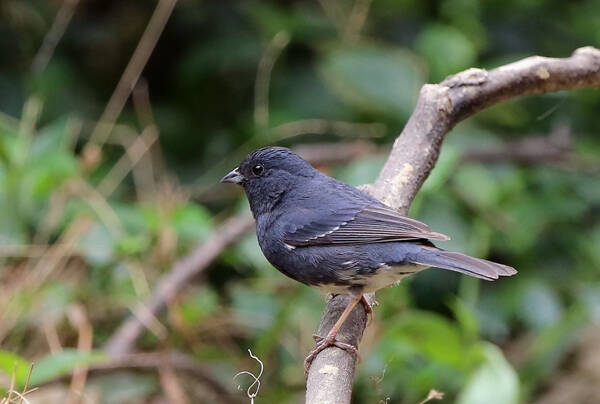Latoucheornis siemsseni
IUCN
LCBasic Information
Scientific classification
- name:Latoucheornis siemsseni
- Scientific Name:Latoucheornis siemsseni,Slaty Bunting
- Outline:Songbird
- Family:Passeriformes Pipitidae B.Bunting
Vital signs
- length:11-14cm
- Weight:13-17g
- lifetime:No verification information
Feature
The beak is conical and thinner than that of birds in the finch family.
Distribution and Habitat
Endemic to China, from Gansu southward to southern Shaanxi and western Sichuan (east to the valleys on the edge of the Qinghai-Tibet Plateau, northeast of the Sichuan Basin), and further to Anhui (Huangshan). In the non-breeding season, it is frequently seen in western Hubei, Sichuan, Anhui, Yunnan, Guizhou, Fujian, Guangdong and northern low altitude areas. Distributed in central and southeastern China. Breeding in the Qinling Mountains in southern Shaanxi, the Min Mountains in northern Sichuan, southern Sichuan and southern Gansu. Wintering eastward to Hubei, Anhui, Wuyishan area in Fujian and northern Guangdong. Spring in Mangshan in southern Hunan and Chebaling in northern Guangdong. Distributed in the following protected areas: Wuyishan (Fujian), Taibaishan, Wolong, Jinfoshan, Qingliangfeng, Wawushan. Distributed in the following mountain ranges and lakes: Tianmushan, Taibaishan.
The Blue Bunting is an alpine forest bird, living in secondary forests and shrubs. It is found in t
Appearance
The male adult Indigo Bunting has a slate gray-blue body; the flank feathers, underbelly and tail coverts are pure white; the flight feathers are black with blue-gray edges, and there are white spots on the base of the inner flight feathers; the tail feathers are black with gray-blue edges. Color, the outermost pair of tail feathers extends downward from the tip of the inner prairie, crossing the feather shaft to the base of the outer prairie with a long arc-shaped white spot; the axillary feathers are white.
The female adult bird has a brown head, neck and upper chest; the upper back is brown with dark brown feather trunk lines; the lower back, waist and tail coverts are all slate gray with brown feather edges; the flight feathers are brown and the upper wing coverts are brown. Both the wings and flight feathers have brown edges; the tail feathers are grey-brown with light edges, and the outermost tail feathers have slender white spots; the chest and flanks are brown; the belly and
Details
Slaty Bunting is a small songbird, endemic to China, with no subspecies.

Slaty Bunting usually moves alone, but sometimes forms small groups of 3-5, moving and foraging on the ground, on power lines, or on rocks and young trees on the side of the mountain. It is bold and not afraid of people. It lives in farmland in winter. It flicks its concave tail when perching. It flies quickly after tilting up. It feeds on coleoptera insects and weed seeds. Call: The call is a high-pitched metallic sound, which is varied and similar to tits. The call is a repetitive high-pitched zick.
The breeding method of the blue bunting has not been studied yet.
It is included in the "List of Terrestrial Wildlife with Important Economic and Scientific Research Value under State Protection" (Item 704) issued by the State Forestry Administration of China on August 1, 2000.
Listed in the IUCN Red List of Threatened Species in 2016 ver 3.1 - Least Concern (LC).
Listed in China's National List of Key Protected Wildlife (February 5, 2021) Level 2.
Protect wildlife and eliminate game.
Maintaining ecological balance is everyone's responsibility!








